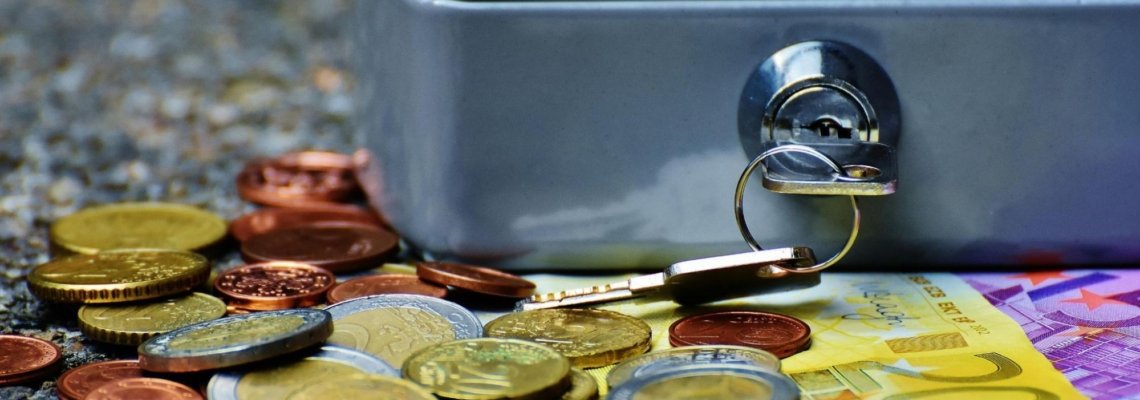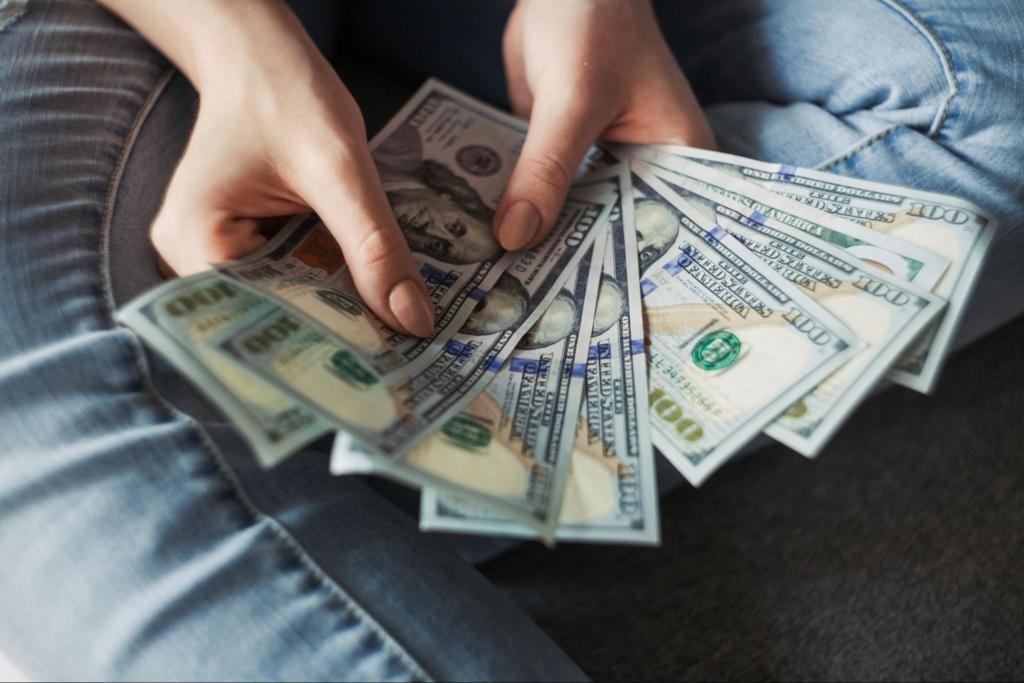
Keeping spare cash in a savings account is common practice across the U.S. In fact, statistics show that 98.6% of U.S. households have some type of transaction account, like a savings account.
These accounts offer a great place to grow wealth, especially if you opt for a high-yield account, but are savings accounts safe? And if so, how much of your money do they protect? In this guide, we’ll answer both questions and reveal how to improve the safety of the funds in your bank account.
How Safe Is a Savings Account?
Savings accounts are among the safest money-saving vehicles. They’re typically opened at banks or credit unions that provide insurance in case your financial institution fails. They’re also considered low-risk investments since they provide a safe place for consistent money growth—the longer your money remains untouched, the more interest you can earn.
While investments like stocks and mutual funds are a better option for long-term money growth as they offer much higher interest rates, they involve the risk of your investment’s value decreasing. Although savings accounts’ interest rates can also vary because they depend on market changes, your funds will grow more consistently in regular savings accounts.
Why Is Money Safe in a Savings Account?
Keeping money in a savings account instead of stashing it at home in cash protects your funds from fire, flood, or robbery. What’s more, financial institutions that provide savings accounts have strict rules and regulations that protect your savings from theft, fraud, and similar situations that may cause you to lose money.
These include:
- Federal insurance
- Strict regulations
- Electronic Funds Transfer Act
Federal Insurance
Savings accounts at most banks are insured by the Federal Deposit Insurance Corporation (FDIC), meaning you’ll be reimbursed up to a certain amount in case of bank failure. The insurance covers both your principal amount and any interest you’ve earned so far.
Banks insured by the FDIC typically have “Member FDIC” written on their websites. When you open an account, the FDIC insurance is provided automatically, and it usually covers savings, checking, and money market accounts, as well as certificates of deposit.
If your account is held at a neobank or a financial technology (FinTech) company that’s not an FDIC member, it may still be covered by federal insurance. However, this is only if your financial institution is partnered with an FDIC-insured bank.
Similarly, if you open an account at a credit union, your account is insured by the National Credit Union Administration (NCUA). The insured amount is typically the same as that offered by the FDIC.
To find out if your financial institution offers either the FDIC or NSUA insurance, you can search for your bank/credit union by visiting the FDIC’s BankFind Suite or the NCUA’s research page.
Strict Regulations
After the financial crisis of the late 2000s, the federal government implemented stricter rules to improve the safety of banks across America. They introduced the Consumer Financial Protection Act of 2010 (CFPA), also known as the Dodd-Frank Wall Street Reform. Its purpose was to improve accountability and transparency of financial transactions and protect consumers from fraudulent or overly aggressive behaviors coming from their financial institutions.
This means you can safely keep your funds in a bank because you should be protected from any potentially deceptive, unfair, or abusive financial services or products.
Electronic Funds Transfer Act
While a savings account typically doesn’t involve a debit card, you may have one if you opt for a money market account or you link your savings account to your checking account.
In these cases, if you lose your debit card or it gets stolen, your liability for unauthorized transactions will be limited thanks to the Electronic Funds Transfer Act (EFTA).
According to EFTA, here’s how the timing of consumer notice affects liability:
| Time To Notify the Financial Institution | Maximum Liability |
| Before any fraud is committed using your card | $0 |
| Within two business days | $50 |
| After two days but within 60 business days | $500 |
In case your account was hacked, you won’t be liable at all if you report suspicious activity within 60 business days.
How Much Money Is Protected in a Bank Account?

One sign that your money will be safe in a savings account is if your financial institution includes insurance. Whether you hold your bank account at a bank or a credit union, the FDIC or the NCUA will typically provide insurance of up to $250,000.
This means that if your bank fails, your account balance will be protected up to that amount. The insurance is provided per depositor, insured institution, and ownership category.
What Happens if Your Bank Fails?
Banks rarely fail, but if they do, it’s because they can’t fulfill their obligations to depositors. For example, if the majority of a bank’s customers think it may fail, they may withdraw their cash, leaving the bank’s cash reserves empty.
This type of bank failure is called a bank run. On such occasions, a state or federal regulatory agency closes the bank and tries to sell it to a healthy bank, allowing customers to keep using their accounts normally. However, if that doesn’t work out, the FDIC has to pay the customers up to $250,000 within a few days once the bank is closed.
What if Your Account Balance Exceeds the FDIC Insurance Limit?
In case of a bank failure, your money is protected and guaranteed up to a set limit. Still, if you have over $250,000 in your account balance, you may lose some money as the FDIC isn’t obligated to pay you over the set limit.
For this reason, it may be a good idea to open accounts at multiple banks or in different ownership categories like:
- Single accounts
- Joint accounts
- Trust accounts
- Ownership accounts
This will allow you to distribute your funds evenly and get separate insurance for each account.
Are Bank Accounts Protected From Hackers?

Both traditional and online banks use similar security systems to ensure the safety of your savings since even traditional banks mostly operate online nowadays. While most banks use security measures like firewalls, antivirus protection, and website encryption to prevent fraud, hackers may still manage to take over your account, commonly through:
- Phishing
- Ransomware/malware
- Distributed Denial-of-Service (DDoS) attacks
Phishing
Phishing refers to criminals sending emails and messages pretending to be a legitimate company, such as your bank, and asking for your personal and financial information. These emails may also include links you’re invited to click on, and once you do, they redirect you to a fake website criminals use to steal your data.
Ransomware/Malware
During a ransomware attack, criminals encrypt bank computers with malware, locking both the bank employees and the customers out of their accounts. They then ask for ransom in exchange for bank account access.
According to recent statistics, over 4,000 ransomware attacks were reported between April 2023 and March 2024. These attacks are severe because they can cost banks millions of dollars in damages and can only be prevented using advanced cybersecurity features.
Distributed Denial-of-Service (DDoS) Attacks
DDoS attacks usually involve flooding a bank’s servers with large amounts of data or fake connection requests, slowing the system down or causing it to go offline. When the system is overwhelmed with data, it’s difficult to find the source of the attack. Criminals use this as a distraction to conduct more targeted attacks like stealing sensitive bank data or committing wire fraud.
How To Protect Your Bank Account
While you may not be able to stop cyberattacks targeted at your financial institution fully, there are a few actions you can take to decrease the chances of criminals taking over your savings account, stealing your funds, and using your bank details to commit fraud.
Here are the steps you should take to protect your bank account:
- Avoid sharing bank account details
- Steer clear of using public Wi-Fi
- Review your account regularly
- Transfer funds to a high-security savings account
Avoid Sharing Bank Account Details
Be careful who you share your bank information with. Never provide personal or financial details to companies or individuals you don’t know or aren’t sure are legitimate. If you receive an email, a message, or a phone call asking for your personal data, such as your Social Security number or bank login data, avoid providing any information until you confirm the request is coming from your bank.
Steer Clear of Using Public Wi-Fi
Hackers may set up a public Wi-Fi network with a legitimate name and use it to steal your personal data if you connect to it. Therefore, it’s best to avoid using public Wi-Fi altogether, but if you must use it for some reason, be careful around networks with similar-sounding names as one of them is likely set up by a hacker. For extra safety, consider using a VPN to encrypt your data.
Review Your Account Regularly
Regularly reviewing your savings account and bank statements can help you spot suspicious activity. If anything seems out of the ordinary, you should:
- Contact your bank immediately
- File a complaint with the FDIC
- Report the case to the police
Taking these steps will help you recover from any damages caused by potential fraudulent activity and increase the chances of the criminals being caught and prosecuted.
Transfer Funds to a High-Security Savings Account
Your savings account isn’t fully safe from hackers because most banks aim to provide fund security and ease of transfer within a single account. Unfortunately, optimizing both objectives in one place is challenging and often results in weaker security features, leading experts to advise against putting all your money in one savings account.
For this reason, transferring the funds is a good idea if you want to save and grow into a high-security savings account. This type of banking platform helps prevent fraud from happening altogether, in contrast to most financial institutions that only flag security flaws once fraud has already occurred.
The best high-yield savings account that provides these advanced fraud protection features and more is FortKnox—a platform created to help you protect your money from fraud and earn high returns on your savings.




